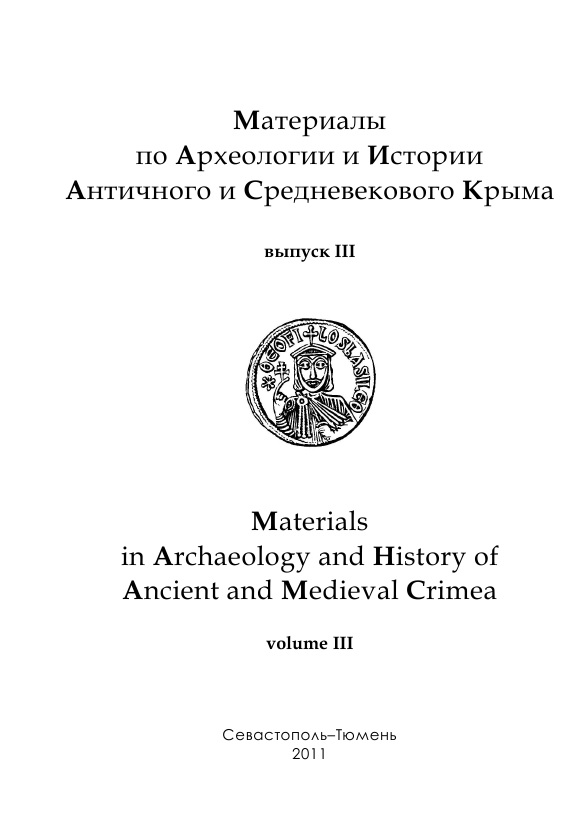К вопросу о методике датировки первохристианских пещерных храмов Восточной Европы
On the question of the method of dating the early Christian cave churches of Eastern Europe
Author(s): Yuri Yu. ShevchenkoSubject(s): Archaeology, Cultural history
Published by: Нижневартовский государственный университет
Keywords: Archaeology; history; religious studies; Christian archaeology; the spread of Christianity; Eastern Europe
Summary/Abstract: Liturgical device, called today the throne – a key architectural element of the canonical church – an artifact that can be typologize, to clarify the chronology of the monuments, which he entered. The position and function of this device in a liturgical church, reflecting its structure, independent of the canons of church services that have changed over time. The first is from this point of view considered the thrones of the cave temples of the Crimea in the 70-th. XIX c. D.M. Strukov, but on the eve of the third millennium, it comes to the «liturgical archeology» (Noel Duval). Correcting scheme chronology of temple altars, D.M. Strukov and supplementing it with material altar of the church in the Middle East, it was possible to outline the basis of this typology of liturgical unit. In the early stages (from the line II–III to V cс. in the first half.) Of the throne and the altar are the same, when operating the device, the earliest liturgical III – beginning of IV c. With the «Cave of the Apocalypse» on Patmos (Aegean), the throne of Ay-Todor (Chilter-Koba) temple (Taurica), «The stone seats» on the Mountain Temptations (Palestine), the altar of the church «innocent victims of babies» in Bethlehem (Palestine). Around the middle of V c. separated from the altar to the throne, becoming an independent canonically temple architectural element. Cave temples of this period (the last third V–VII cc.), Such as «Judicatory», «Three Riders», «Donators» in the district of Eski-Kermen (Taurica), multiple churches in this time of Cappadocia (Asia Minor), have thrones still adjacent to the inner side of the altar wall, to serve before the throne of the ancient liturgy of ranks (the «Twelve Apostles» – «Didache»; rank of ap. Mark of Alexandria, Jerusalem rite of ap. Iakov Elder). Just resolution of the «Palace Cathedral» (Trullan) in 692 prescribed by the Annunciation mandatory service in the order of st. Vasiliy the Great (around the altar), put an end to the thrones of the device adjacent to the inner wall of the apse. Since then the throne is always erected in the center of the altar, to be able to round-trip.
Journal: Материалы по археологии и истории античного и средневекового Причерноморья
- Issue Year: 2011
- Issue No: 3
- Page Range: 55-147
- Page Count: 93
- Language: Russian

